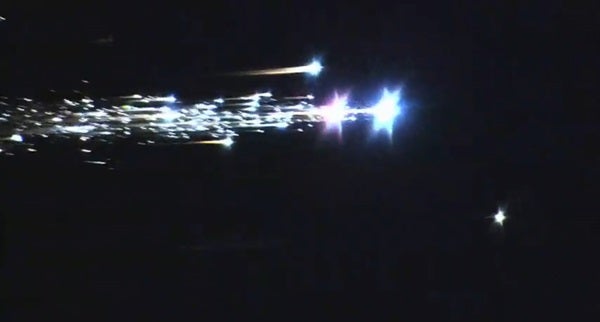The sample return capsule of the Japan Aerospace Exploration Agency’s (JAXA) technology demonstrator spacecraft, Hayabusa, boomerang backed to Earth June 13. The asteroid explorer Hayabusa successfully separated its capsule at 7:51 p.m. JST June 13 and re-entered the atmosphere to complete its mission operation at 10:51 p.m. The capsule, along with its mother ship, visited a near-Earth asteroid, Itokawa, 5 years ago and has logged about 1.25 billion miles (2 billion kilometers) since its launch in May 2003.
The capsule successfully landed in the Woomera Prohibited Area in South Australia and was retrieved at approximately 4:08 p.m. JST June 14. With the return of the Hayabusa capsule, JAXA has concluded a remarkable mission of exploration.
Launched May 9, 2003, from the Kagoshima Space Center, Uchinoura, Japan, Hayabusa was designed as a flying testbed. Its mission: to research several new engineering technologies necessary for returning planetary samples to Earth for further study. With Hayabusa, JAXA scientists and engineers hoped to obtain detailed information on electrical propulsion and autonomous navigation, as well as an asteroid sampler and sample re-entry capsule.
The 1,124-pound (510 kilograms) Hayabusa spacecraft rendezvoused with asteroid Itokawa in September 2005. Over the next 2.5 months, the spacecraft made up-close-and-personal scientific observations of the asteroid’s shape, terrain, surface altitude distribution, mineral composition, gravity, and the way it reflected the Sun’s rays. On November 25 of that year, Hayabusa briefly touched down on the surface of Itokawa. That was only the second time in history a spacecraft descended to the surface of an asteroid (NASA’s Near Earth Asteroid Rendezvous-Shoemaker spacecraft landed on asteroid Eros February 12, 2001). Hayabusa marked the first attempt to sample asteroid surface material.
The spacecraft departed Itokawa in January 2007. The road home for the technology demonstrator has been a long one, with several anomalies encountered along the way.
“Retrieved capsule will be transported to JAXA Sagamihara Campus in Kanagawa, Japan,” JAXA president Keiji Tachikawa wrote in a statement. “First, the sample container will be inspected, and then the content will be extracted for analysis. We hope to find the Itokawa’s surface material in the capsule, and contribute to understanding the origin and evolution of the solar system.”










